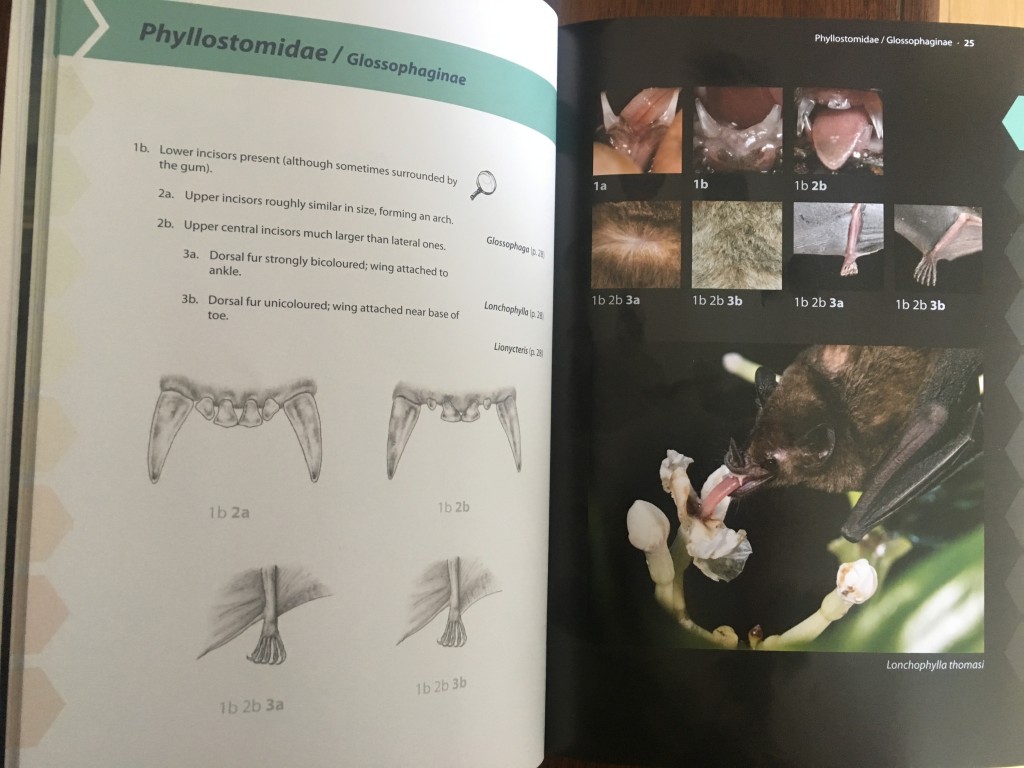Book Review: Field Guide to the Bats of the Amazon
The Amazon is home to more than 10 percent of the world’s 1300 bat species. Some small areas are home to over 100 species. And so it is an understatement to say that there are some ID challenges. Yet, until now, there was no field guide. So the Field Guide to the Bats of the Amazon (Pelagic Publishing, 2018) from Adrià López-Baucells and a bunch of other authors, just out in hard copy, is a very welcome addition to my bookcase.

IDs Made Easy
The PDF of the field guide was freely available last year, and that was pretty much all we needed to identify the bats we caught on our Amazon expedition in June (admittedly having a bunch of bat experts on hand meant we were off to a huge head start). Now in hard copy, the second edition 170 page paperback, is small enough to take on a trip, and very straightforward to use.
The book is essentially an illustrated key to identifying all 160 bats of the region, and so there is little to zero additional information on behaviour or ecology. Many ID keys are best not opened without a PhD in logic, 3 hours of spare time, a strong coffee and a longer retention span than I have: If FA<46 then go to 7) ; If FA>46 go to 11; if FA=46 then go to 21 unless HF<23 in which case go back to square 1 and cry. But this one is easy to work through. An opening page is a quick cheat sheet of photos and key characteristics to decide what family you are looking at. After which it is pretty straightforward to hone in on the species using a combination of measurements, dental profiles and a variety of other fairly easy to check characteristics. Of course for many species you will need to have the bat in the hand, some callipers and a magnifying glass. But that is always going to be the case, at least until there is a DNA app for an iPhone. This book, though, makes it relatively easy for those less familiar with the bats of the region to decide on the species. I congratulate the authors for being able to put themselves so well in the shoes of readers who might use this field guide and be unfamiliar with the bats of the region.
The Bats of the Amazon also includes information on echolocation calls which can help identify species, or at least families of species (there are a lot of caveats around how difficult relying on echolocation ID can be in the Amazon). It concludes with a handy rogues gallery of the faces (officially “rostra”) of every species, save a very few that are yet to be photographed.
My only gripe is that the book doesn’t contain any information on the known range of species. Perhaps this was a deliberate choice, given the ranges of many species are poorly known, but it would be helpful to know what is at least proven to exist in a particular area. Nevertheless a great book. I hope the style will inspire others to write more: Indonesia, the Philippines, the Congo Basin … anyone?
Jon
4 Comments
Leave a Reply
You must be logged in to post a comment.


David Bishop
Jon, this is excellent news. I am just on my way home from my 31st trip to Bhutan (will send you an image of what may well be a new Pika from the kingdom) and off to Amazonian Brazil in a few weeks. Hopefully I can obtain a copy in the interim. Very best wishes. David Bishop